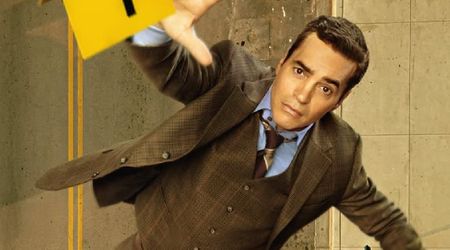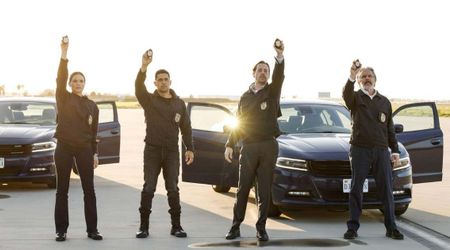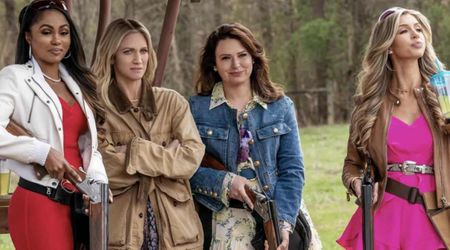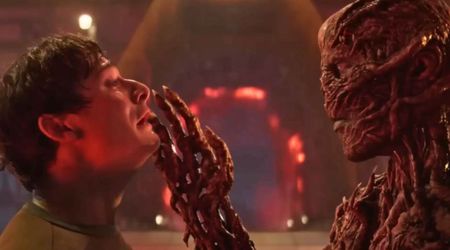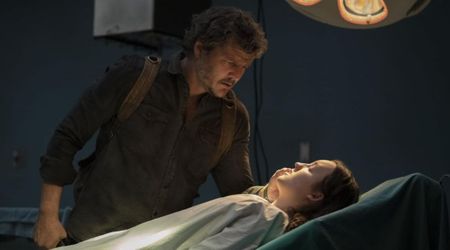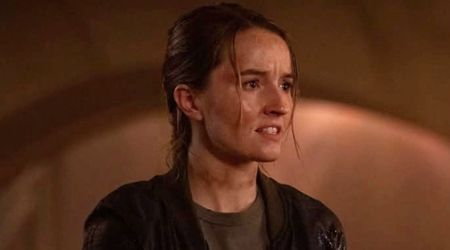'America: Our Defining Hours’: Donner Party, the Midwest pioneers who resorted to cannibalism to survive

Through the early years of the United States of America, many events transpired that helped make what the country is today. History Channel's latest miniseries, 'America: Our Defining Hours' draws upon 300+ years of US history, from the Mayflower, the American Civil War to September 11, to tell a relevant, emotional tale of how the US, as a nation, seized moments of crisis to create a better tomorrow. One of those events was the infamous Donner Party migration, when nine covered wagons left Springfield, Illinois, on the 2,500-mile journey to California in April 1846, in what would become one of the greatest tragedies in the history of westward migration.
Delayed by a series of mishaps, they spent the winter of 1846–47 snowbound in the Sierra Nevada mountain range. Some of the emigrants resorted to cannibalism to survive, eating the bodies of those who had succumbed to starvation and sickness.
The organizer of the group was James Reed, an Irish native and a businessman who hoped to prosper in California. Reed also hoped that his wife, Margaret, who suffered from terrible headaches, might improve in the coastal climate. George Donner, a 60-year-old farmer was chosen as the wagon's train captain and the expedition took his name. According to Reed's daughter, Abraham Lincoln who would go on to become the president was a friend of Reed and briefly considered going on the expedition. Lincoln declined due to opposition from his wife.
Before leaving, Reed had read the book The Emigrants’ Guide to Oregon and California, by Landsford W Hastings, who advertised a new shortcut across the Great Basin. This new route enticed travelers by advertising that it would save the pioneers 350-400 miles on easy terrain. At Fort Bridger, the Donner Party decided to separate from the main body and travel on this new route. Unfortunately, the route, which had not been tested by Hastings himself, led to the doom of the party.

It was as the party reached the summit of the Sierra Mountains near what was then known as Truckee Lake -- having since been renamed as Donner Lake -- they found the pass clogged with newly fallen snow up to six feet deep as the Sierra snows had started a month earlier than usual. They retreated to the lake 12 miles below where the hapless pioneers were trapped, unable to move forward or back. Shortly before, the Donner family had suffered a broken axle on one of their wagons and fallen behind. Also trapped by the snow, they set up camp at Alder Creek six miles from the main group.
Each camp erected make-shift cabins and hoarded their limited supply of food. The snow continued to fall, reaching a depth of as much as 20 feet. Hunting and foraging were impossible and soon they slaughtered the oxen that had brought them from the East. By then, there was a lot of discord among the group, which had other families join them until then. When this meat was consumed, they relied on the animals' tough hides. But it was not enough as starvation began to take its toll. With no other remedy at hand, the survivors resorted to cannibalism.
In mid-December, a group of 15 since dubbed the "Forlorn Hope" donned makeshift snowshoes and trudged through blizzard conditions in an attempt to break through the pass and into California. Seven (five women and two men) survived to alert the community at Sutter's Fort of the Donner Party's plight. Included in the group were two Miwok Indians, Luis and Salvador, who had been sent by early California pioneer John Sutter to help the trapped emigrants. The Miwoks brought badly needed supplies and helped provide important winter survival advice. This party was the first forced to resort to cannibalism of the dead when all their supplies were gone. Eventually, when even the (dead) human sources of food dwindled, it was decided to kill the Miwoks. Though they ran away, both men were shot when they were found lying in the snow close to death after going without food for nine days.

Nearly four months after they were first trapped, a series of four rescue parties were launched with the first arriving at the Donner camp in late February. Between them, the rescuers were able to lead 48 of the original 87 members of the party to safety in California. Five had perished before reaching the Sierras, 35 died at the camps or attempting to cross the mountains, and one died just after reaching the valley at the foot of the western slope. Many of the survivors lost toes to frostbite and suffered chronic physical and psychological disorders. Only the Reed and Breen families remained intact. The children of George Donner and his brother, Jacob, were orphaned.
James Reed went on to make a fortune in California's Gold Rush. Hastings, whose untested route had led to the party's mishaps, wanted to wrest California from Mexico and establish the independent Republic of California, with himself holding high office. However, when the US annexed California during the Mexican–American War, Hastings' dream collapsed. Instead, when Hastings sided with the South during the Civil War, he planned to separate California from the Union and unite it with the Confederacy. President Jefferson Davis promoted Hastings to the rank of Major in the Confederate States Army, and asked him to assemble a military unit in Arizona, with the aim of defending California. However, as the Civil War ended one year later in 1865, the so-called Hastings Plot did not come to fruition.
'America: Our Defining Hours' will air on History Channel on July 5 at 9/8c.

